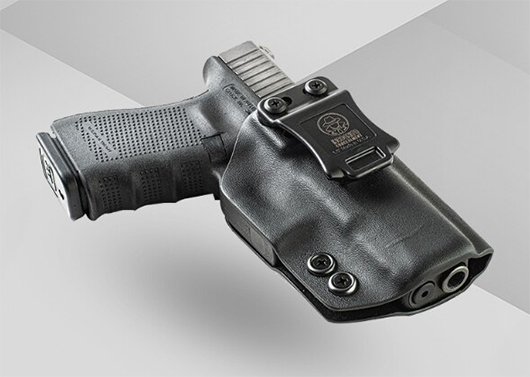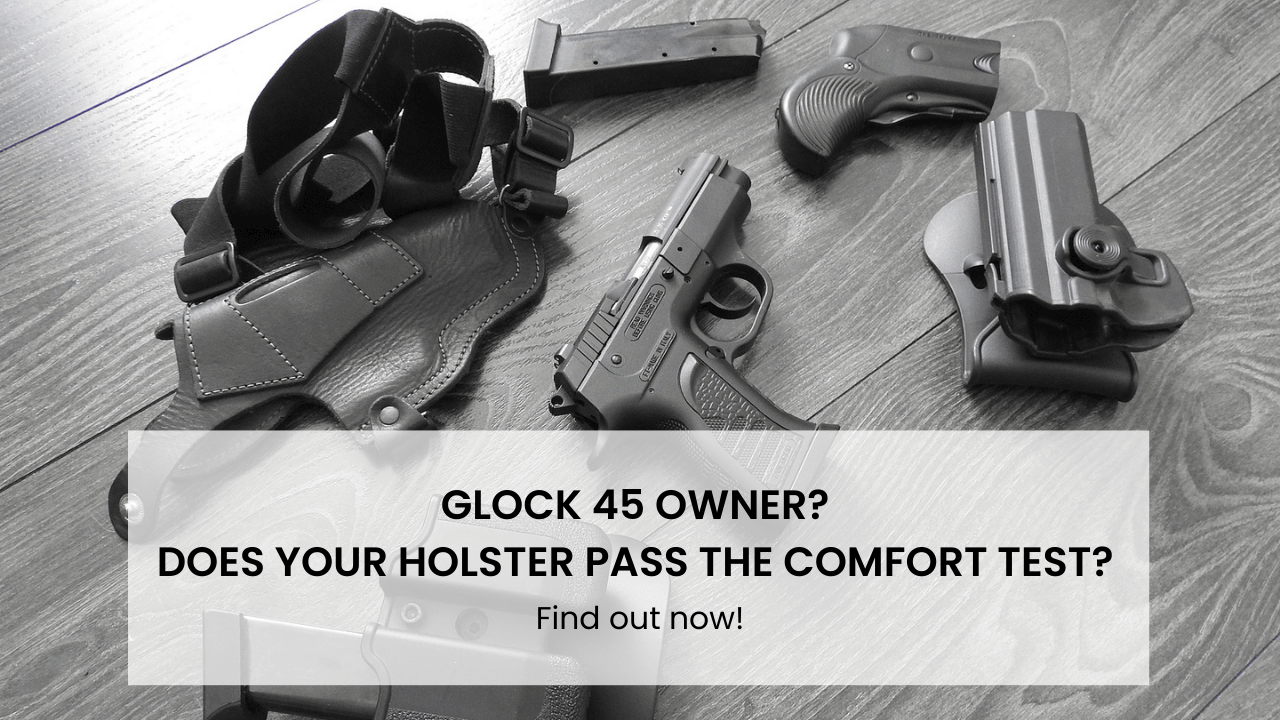How to choose right IWB or OWB of Holster for Your Need
Mar 2nd 2021
Most holster types fall into two major categories: Inside the waistband (IWB) holsters and outside the waistband (OWB) holsters. Each type has its own set of pros and cons.
Deciding which holster style is most useful to you depends on your needs, carry handgun, local laws, personal abilities, and preferences.
Initial Considerations
Both IWB and OWB holsters are types of waistband holsters and require the use of a high-quality, sturdy gun belt. These types of holsters possess belt loops or belt clips intended to ride on your belt, securing your gun to your body.
You can set a waistband holster in one of many carry positions, depending on whether you are left-handed or right-handed. Carry positions use a clock notation to indicate where the holster sits on your waist.
For example, the 12 o’clock position is directly in front of you, which would place your holster in front of your belly.
The most common carry positions are strong-side hip (3 o’clock for right-handed shooters, 9 o’clock for left-handed), appendix carry (somewhere around 12 o’clock, depending on preferences and handedness), and kidney carry (4 o’clock when right-handed, 8 o’clock when left-handed).
High-quality IWB and OWB holsters should let you adjust them for cant and depth, allowing you to fine-tune your holster and adapt it for the best comfort or concealment.
When To Use IWB Holsters

An IWB holster should easily conceal the firearm of your choice, allowing you to carry your gun in public where legal, without drawing attention to the fact that you are armed.
The IWB style is the most popular choice for concealed carrying holsters because they maximize your firearm’s concealment.
With the right cover garments (e.g., suitable pants and shirt), an IWB holster almost completely disappears under your clothing, leaving only a belt clip visible on your gun belt.
When carrying inside the waistband, remember that the larger your handgun, the harder it becomes to conceal it effectively, even if you can carry it comfortably.
In contrast, the smaller the handgun, the more challenging it is to aim and shoot accurately. You must find the right balance between quick deployment and concealability.
Because an IWB holster rides on the inside of your waistband, they may be a little less comfortable than OWB holsters. Adjusting your cant, depth, and carry position can help you mitigate comfort issues.
While carrying IWB is excellent for concealment, this method requires you to learn drawing from concealment techniques and practice your draw stroke to access your firearm quickly and efficiently.
The specific techniques required differ depending on your carry position, and some may be easier to practice than others.
In short, you should use an IWB holster if you are primarily carrying concealed and if your carry firearm of choice is a compact pistol or a snub-nosed revolver.
When To Use OWB Holsters

OWB holsters are primarily suited for open carrying and duty use, including law enforcement, military, or security.
In some states and jurisdictions, civilians may also open carry legally. Make sure to know your local and state laws before considering open carry.
A handgun in an OWB holster rides on the outside of your body, making it easier to carry full-size pistols and larger revolvers. It also eliminates worrying about parts of your gun digging into your sides, hip, or thighs, depending on your carry position.
Many shooters, especially people new to concealed carrying, are more likely to stop carrying entirely if the experience is uncomfortable. An OWB holster is not only more comfortable to use, but it may also be the solution for people who can’t carry IWB comfortably.
Another advantage of OWB holsters is the ease of access. Drawing from a typical OWB holster is typically faster than from an IWB holster, even from concealment, because there are fewer steps involved in the draw stroke, such as pulling cover garments out of the way.
However, specific types of OWB holsters commonly employed by people in duty positions, such as security holsters, are designed with extra safeguards and retention systems intended to prevent loss or theft.
These holster types may complicate your drawing process, requiring you to practice your draw stroke until reaching a comfortable speed.
Although it is possible to conceal an OWB holster with the right choice of cover garments, this may not be an option under certain climates or environments.
You should only consider carrying concealed with an OWB holster if your cover garments are appropriate for your surroundings.
You should use an OWB holster if you need more comfort or ease of access, if you prefer (or need) to carry a full-size handgun, or legally able to open carry.
The Takeaway
Whether you prefer inside or outside the waistband, don’t forget to practice carrying with your holster and firearm. Test your holster in various positions and everyday life situations, and ensure that your carry position works for you, both in terms of concealment and comfort.
Consider buying both an IWB holster and an OWB holster for the firearm of your choice. Having both types available opens more possibilities to adapt, allowing you to select the ideal carry method for the day.
Incognito Concealment offers a large selection of Kydex holsters, 100% hand-crafted in the United States. Our holsters are compatible with a wide range of pistols and revolvers, suitable for both left-handed and right-handed shooters, and available in several colors and patterns, such as Tactical Black, Flat Dark Earth, Navy Digital Camo, or Multicam.
All our products are covered by our limited lifetime warranty, as well as a 10% discount for military, law enforcement, and first responder personnel.
If you have any requests or questions, contact us at (586) 999-5820.











